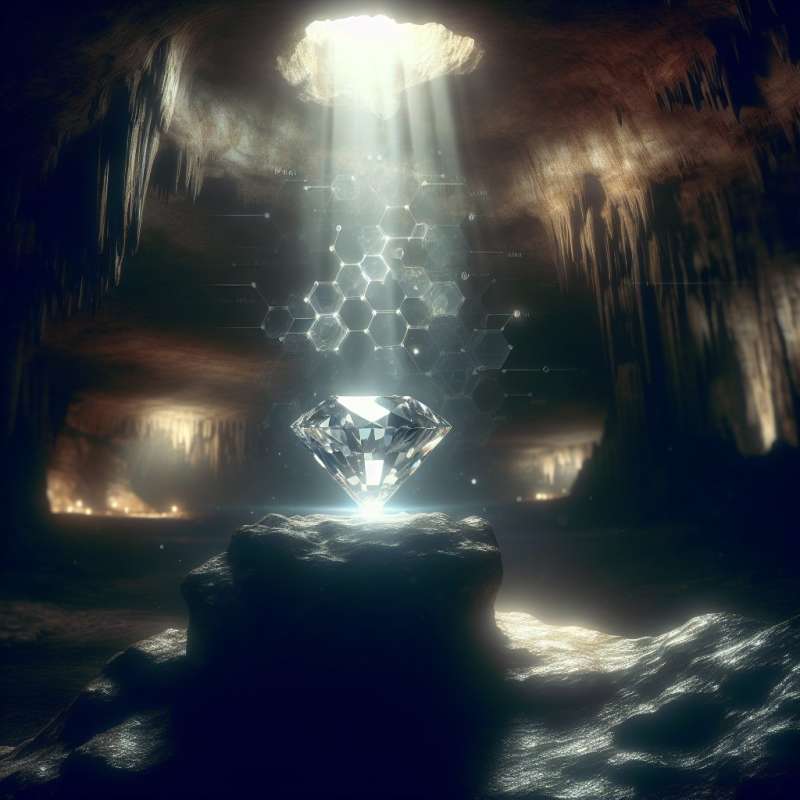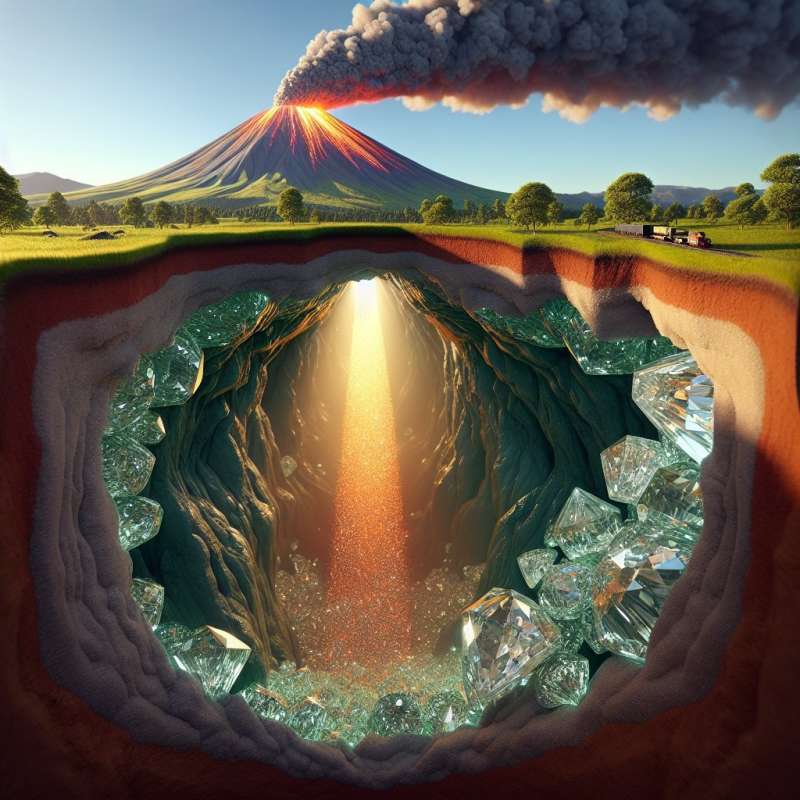
Diamond Formation Basics
Diamonds form under high-pressure, high-temperature conditions existing deep within the Earth's mantle, roughly 140 to 190 kilometers below the surface, over billions of years.
Carbon Sources Revealed
The carbon atoms diamonds are made from come from ancient carbon-rich materials, such as the remains of prehistoric plants and animals, subjected to the Earth's intense heat and pressure over time.
Crystal Growth Process
Under extreme conditions, carbon atoms bond in a unique way, creating a crystal lattice structure that grows over time, resulting in diamonds' unparalleled hardness and high refractive index.
Volcanic Eruptions Transport
Diamonds are brought closer to the Earth's surface by deep-source volcanic eruptions, which create 'kimberlite' and 'lamproite' pipes, serving as elevators for diamond-bearing rocks.
Rare Blue Diamonds
Blue diamonds contain boron, an element that absorbs yellow light, thus reflecting a blue hue. These are among the rarest diamonds, with the source of their boron still a subject of research.
Aged Beauty
Most diamonds we find today are 1 to 3.5 billion years old, making them a captivating time capsule of the Earth's geological history and showcasing the planet's evolution.
Synthetic Diamonds Emergence
Lab-grown diamonds, identical in structure to natural ones, are created in weeks using High Pressure High Temperature (HPHT) or Chemical Vapor Deposition (CVD) processes, offering an ethical and less expensive alternative.Diamonds in Space
Astronomers discovered a diamond star, named 'Lucy,' which is essentially a crystallized white dwarf star, estimated to be 10 billion trillion trillion carats.
Where do diamonds form within Earth?
Earth's crust, 50km deep
Earth's mantle, 140-190km deep
Earth's core, 500km deep
Company